Thank you, community of River Falls, for a successful referendum!
|
|
|
|
|

Question #1: Operational Referendum
Shall the School District of River Falls, Pierce and St. Croix Counties, Wisconsin be authorized to exceed the revenue limit specified in Section 121.91, Wisconsin Statutes, by $1,000,000 for the 2024-2025 school year; by an additional $1,000,000 (for a total of $2,000,000) for the 2025-2026 school year; and by an additional $1,000,000 (for a total of $3,000,000 and to remain at that amount) for the 2026-2027 school year and thereafter, for recurring purposes consisting of operational expenses, including to maintain curriculum programs and services, to retain staff, and to provide for safety, security, transportation, utilities and technology?
In summary, the operational question seeks voter approval to increase our revenue limit authority in a “3-year step-up” approach including $1M (2024-25), $2M (2025-26), $3M (2026-27), capped at $3M recurring (2027-beyond).
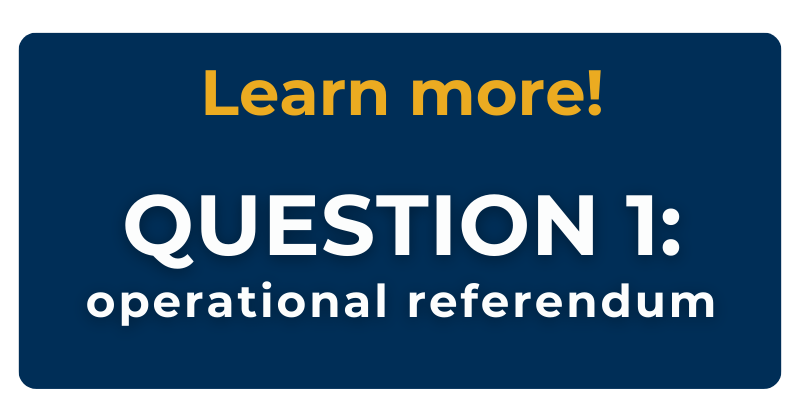

Question #2: Bond (FACILITIES) Referendum
Shall the School District of River Falls, Pierce and St. Croix Counties, Wisconsin be authorized to issue pursuant to Chapter 67 of the Wisconsin Statutes, general obligation bonds in an amount not to exceed $28,000,000 for the public purpose of paying the cost of a school building and facility improvement project consisting of: district-wide safety, security, building systems, grounds and infrastructure improvements; construction of a bus and vehicle maintenance shop and related facilities; construction of an addition for a multi-purpose indoor facility and renovations at the High School; and acquisition of furnishings, fixtures and equipment?
In summary, the $28 Million Bond involves three categories of facility improvements:
- Security & Building Systems, and Grounds ($20M Approx.)
- Transportation Center ($4M Approx.)
- Indoor Multi-purpose Space ($4M Approx.)
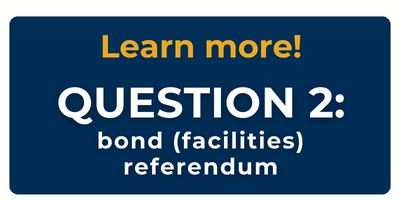
Learn more!
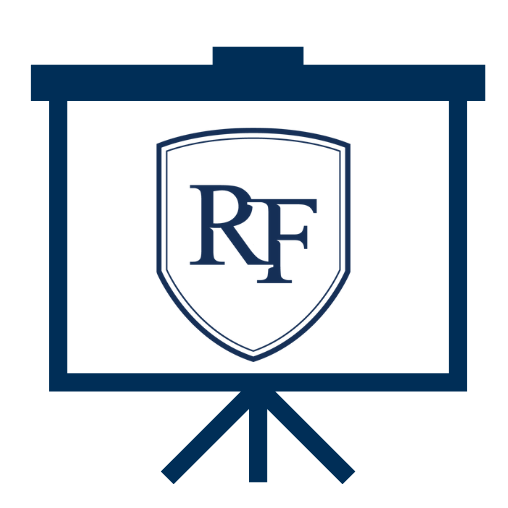
|
Why is an Operational referendum needed in River Falls?
We are not alone with this problem. Over 80% of districts statewide have been forced to seek operational referendum support from their communities (Table 1).
There are many factors to consider when deciding on a referendum, but ultimately the SDRF cannot continue current programming and operations without additional revenue. Despite a long history in the SDRF of planning ahead, reducing debt, and saving for facillity expenses, state-imposed inequitable revenue limits and inadequate funding from the state have not allowed revenue to keep up with inflation.
|
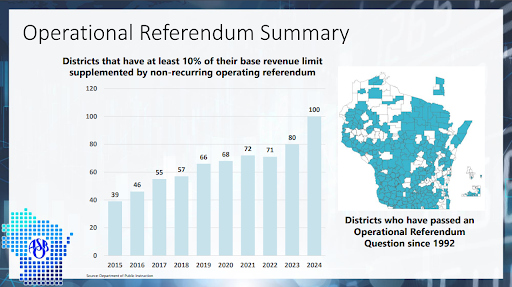
Table 1
This ongoing revenue problem has become more challenging with the 2023-25 state biennial budget that did not include enough new revenue to replace one-time/non-recurring federal pandemic funding or account for staffing shortages and historically high inflation. Without additional revenue or a significant reduction in expenditures, the SDRF budget will include deficits that are not sustainable into the future. Therefore, the District seeks voter support for a levy override to increase our revenue.
With approximately 80% of our district expenses tied to compensation for employees, the operational referendum will allow the district to offer appropriate salary/benefit increases year over year, enabling SDRF to stay competitive with other public schools in Western WI and in the Eastern Metro Area. The operational referendum will also be utilized to address the increased inflationary costs associated with purchasing educational supplies, materials, and services, as well as handle the operational increases in our schools, such as electricity, natural gas, general building/grounds maintenance, and costs associated with the transportation department.
|
What process was used by the district to determine the need for our referendum questions?
In June 2022 the Board approved a comprehensive District Strategic Plan that included Goal Area #5: Operational Excellence to include planning and communication related to financial plans, enrollment projections, and facility needs. The Board commissioned independent firms to study enrollment trends, study facility needs, and to conduct a community survey.
The Board appointed a task force named the Project Oversight Committee (POC) to prioritize the master facility needs assessment developed by LHB Architects and Kraus-Anderson construction management firm. After eight meetings, the POC narrowed down the comprehensive facility study and related needs. In September, the district surveyed the community to gather opinions related to potential facility projects, to provide background information related to facility options, to identify projected costs, and to provide preliminary property tax impact estimates of potential referendum projects. The district received nearly 2000 completed surveys which were collected and summarized by an independent firm (School Perceptions). View the Community Survey Report from School Perceptions - presented at the October 16, 2023 school board meeting.
After analyzing community survey results, the POC brought their final recommendation to the full Board on November 20. The Board approved the formal resolutions on December 11, 2023.

Process timeline for referendum
|
The operational question seeks voter approval to increase our revenue limit authority by $1M (2024-25), $2M (2025-26), $3M (2026-27), capped at $3M recurring (2027-beyond) for operational expenses (including to maintain programs and services, to hire and retain staff, purchase instructional materials/supplies, etc.).
What is the tax impact of Operational Referendum Q1?
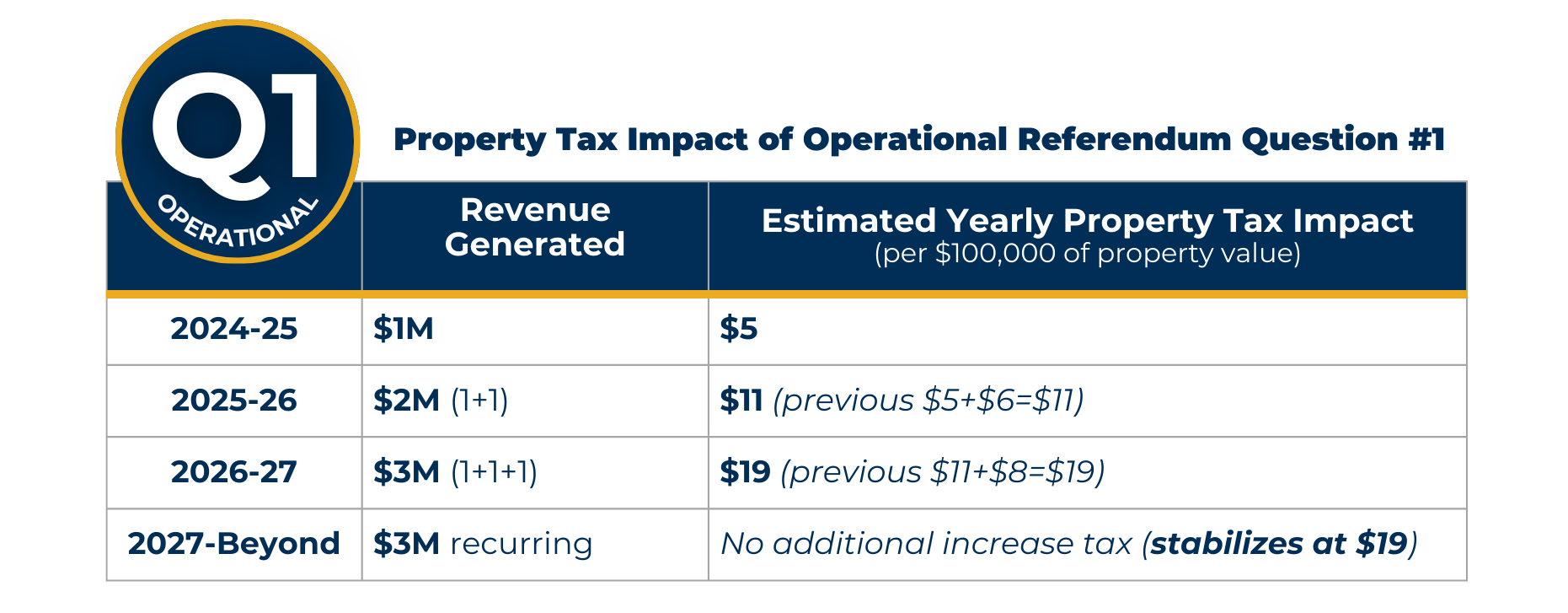
NOTE: Some school districts request a non-recurring referendum for a set number of years, but a fiscal cliff is created when voter-approved revenue limit authority expires. Since most operational referendums are used to fund ongoing programming expenses, these school districts typically need repeating referendums which consume more time and additional resources. A recurring referendum allows voter-approved revenue limit authority to continue, so that long term planning and decisions can be made. Our proposed recurring operational referendum caps, at $3M in year three, and recurs/remains at $3M after the third year.
|
The bond question will seek voter approval for $28M total to include the following three main categories:
|
Security, Building Systems and Grounds ($20M Approx.)
Facility improvements include surveillance camera and door security system advancements, heating/ventilation upgrades, air quality improvements, restroom remodels, boiler replacements, back-up electrical generators, fire suppression sprinklers, kitchen exhaust, and tennis court and sidewalk improvements.
Transportation Center ($4M Approx.)
Built in 1966, our existing transportation center is a fifty-seven year-old building that is, at best, substandard and long overdue for improvements. With this proposal, we would build a new transportation building on the same property. We will not tear down the existing maintenance bay and office space but will utilize this space for storage of a few buses or vehicles and supplies.
The new building would be constructed on a lot recently purchased by the district which adjoins our current transportation center location. The new building would include two maintenance bays, office space, and restrooms. We would also have a small cubicle workstation area for our district buildings, grounds, and maintenance staff.
Although we are holding down construction costs by not replacing our existing bus storage sheds, we will be improving bus exhaust systems within our existing sheds to comply with safety standards.
MULTI-PURPOSE Space ($4M Approx.)
A new indoor multipurpose addition will be constructed at River Falls High School. The multipurpose addition will be a flexible space that will be used to provide the following:
- Adequate space for the high school wrestling program that is currently forced to practice in the middle school basement.
- Improve district space options for youth athletic programming.
- Support and enhance space for physical education courses.
- Improve flexible space for speed and conditioning programming.
- Create space for physically active Community Education courses.
- Upgrade co-curricular practice areas including baseball/softball batting and pitching cages, soccer drills, dance, and cheerleading. This will also allow the marching band the use of the existing gym while phy. ed. classes are held in the new space.
|
what is the Tax Impact for Q2 Bond(facilities) REferendum?

|
Operational Referendum
An operational referendum asks voters for authorization to exceed the state imposed revenue limit for day-to-day operational expenses. It’s called operational because if approved, the district will receive additional funding from the tax levy to operate our schools.
The state revenue limit is a cap on the total overall revenue from the combined amount of tax revenue and state aid that a school district can receive in a year – and is the largest source of funding for SDRF. An operational referendum seeks voter approval on a levy override to provide funds for the day-to-day school operational budget.
Bond (Facilities) Referendum
A bond referendum question allows a district to issue a bond which loans us money (similar to a home mortgage) for facility improvements. Bond referendums can provide funds for improving existing facilities, upgrading facilities, and/or new construction. Similar to a home mortgage, after voter approval of a bond referendum, debt is issued into a repayment schedule to be paid back by the district.
Bond referendums are different from operational questions – and by law, the two must be listed separately on a ballot. Examples of items that could be included on a bond referendum are facility projects such as upgrades to electrical, plumbing, heating, technology, furniture, parking lots, roofs, additions to buildings, equipment, grounds, and site work.
Revenue Cap Limit
The state revenue limit acts as a ceiling on the total overall revenue, from property tax revenue and state aid, that a school district can receive in a year. This limit constitutes the largest source of funding for SDRF. Each Wisconsin school district is assigned its own unique revenue limit by the state. The 2023-24 school year revenue limit for the SDRF is $11,000/pupil – which is the low revenue floor and is well below the state average. Many other districts around the state (including some of our neighbors) receive a higher revenue limit than our $11,000/pupil – see page 11 for related details.
Legal Considerations
By law, there will be two separate questions which cannot be combined into one. Also, no more than two total referendum questions can be asked in a calendar year. State statutes limit when school districts can go to referendum – only on state scheduled election dates.
|
A: February 20, 2024
At least 70 days of notice are required before a referendum question can be placed on the ballot which is why the board must pass a formal resolution (stating the details of both referendum ballot questions) no later than December 11, 2023.
State statutes limit when school districts can go to referendum – only on state scheduled election dates. For voter-approved revenue limit authority to be used during the 2024-2025 school year, a referendum would need to be approved either on February 20, April 2, or November 5, 2024. The district has selected February 20, 2024 as our referendum date.
For budget planning purposes and construction bidding and completion timelines to be considered a high priority, February 20, 2024 is our most prudent election date. While it could be possible to wait until April or November to hold a referendum, many decisions that impact the 2024-25 budget should have already been made by that time. Considering the recent challenges schools are experiencing with staffing shortages, it would be ill-advised, challenging, and perhaps damaging to district operations if a referendum is put off until April or November.
A: Our programs, services, courses, co-curriculars, and resources remain intact. If the “operational” referendum is passed on February 20, 2024, the school district will be allowed to exceed the antiquated 1993 state-imposed revenue limit, beginning with the 2024-2025 school year, which will preserve what we now have in place. The impact of a referendum on local taxes will vary based on state aid and assessed property values, but it is estimated that the property tax impact will be as follows:

A: There is no “second chance” at holding another referendum later in 2024 because state law limits districts to holding no more than two questions per calendar year.
Without a successful referendum, steps will be taken to reduce expenses in the District. Cuts would likely include a reduction in programming, services, and staff; a freeze or reduction of the purchases of textbooks, learning resources, materials and supplies; the deferral of annual capital maintenance and technology projects; increased class sizes; wages limitations; and the consideration of other budget reductions.
The school district could use fund balance to continue current operations for a short period of time, but depleting the district’s fund balance would reduce interest income and add additional expenses to the budget for short-term borrowing and paying interest on a line of credit.
Additionally, current school finance law states that if/when a district fails an operational referendum, that district will be financially penalized by the state by disallowing any low revenue ceiling increase to benefit the district for three years or until a subsequent operational referendum passes.
A: District officials will immediately start the planning process for the approved facility projects. Key steps include the following:
-
Finalize and prioritize facility project specifications.
-
Create a project completion schedule.
-
Request bids and select contractors.
-
Begin construction late spring/early summer 2025.
A: The projects outlined in the bond (facility) referendum will remain on the district’s rolling, annual comprehensive facility plan, but will be deferred until resources are available to complete the projects. The District will maintain and update the 10-year facility projects list and will continue to prioritize and complete projects within the limited annual operational budget. Larger projects would be deferred until resources are available.
A: The 2023-25 legislative state budget process created a “low revenue floor” of $11,000 per pupil. In other words the least any district would receive per pupil is now set at $11,000 minimum under the revenue cap limit. This $11,000 comes from two sources – state aid and local property taxes. We are now tied for last place with other districts in the state of Wisconsin regarding our $11,000 revenue limit.

State revenue limit formula disparity among neighboring districts.
Revenue limit includes only state and local revenue (does not include federal funds).
Through another regional and statewide comparison, the SDRF ranks 333 out of 421 districts in the state of Wisconsin in per pupil spending. This comparison includes dollars not only from the $11,000 revenue limit (state and local revenues) but also from federal grant funds (i.e. Special Education, Title/Reading and Math support, etc.).
Table below: Regional comparison related to spending per pupil includes federal funds in addition to the state and local revenue limit funding.
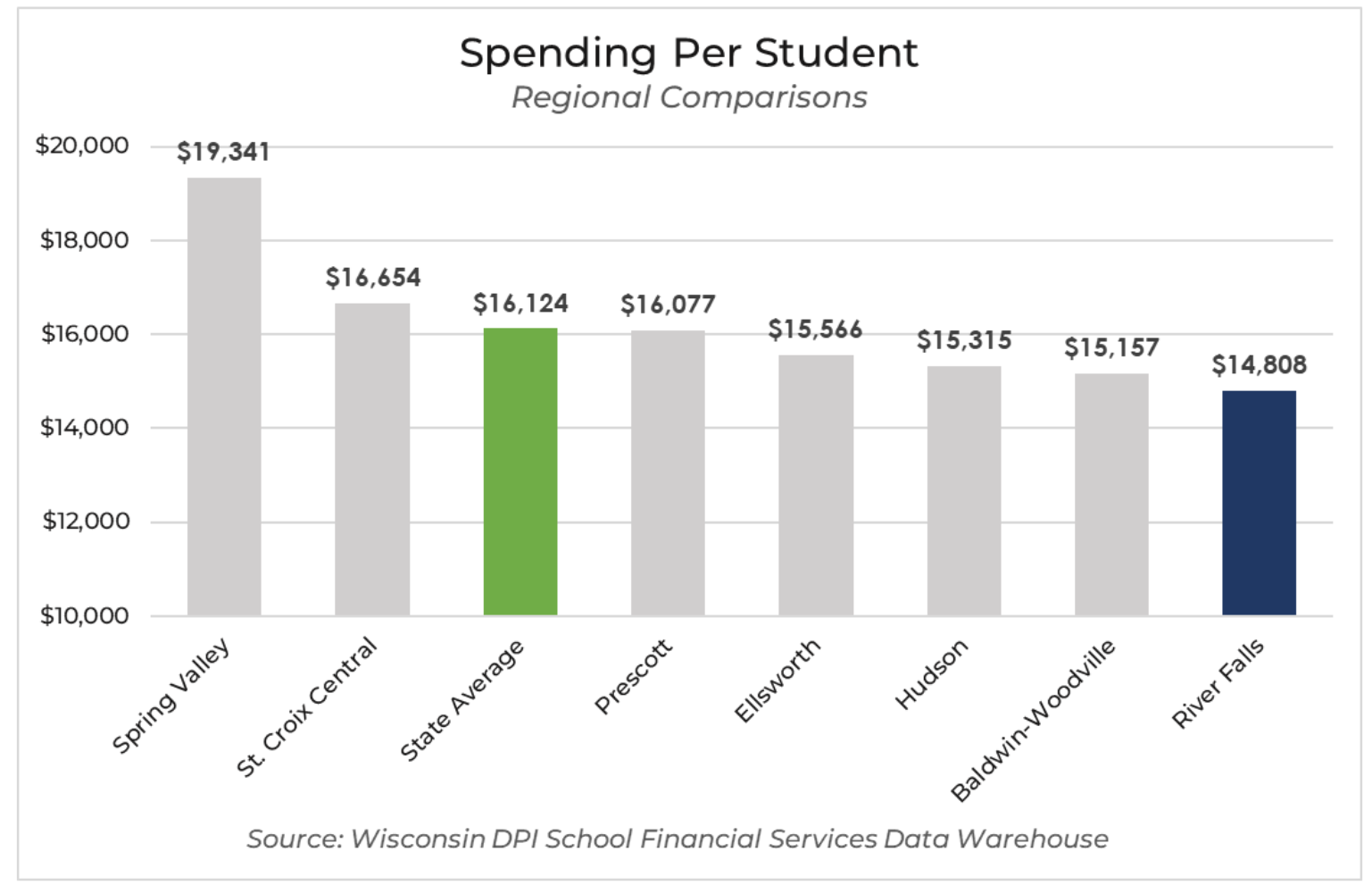
(Most current statewide data available: 2022)
|
|








 SUPT. BENSON'S FEB 15
SUPT. BENSON'S FEB 15 









